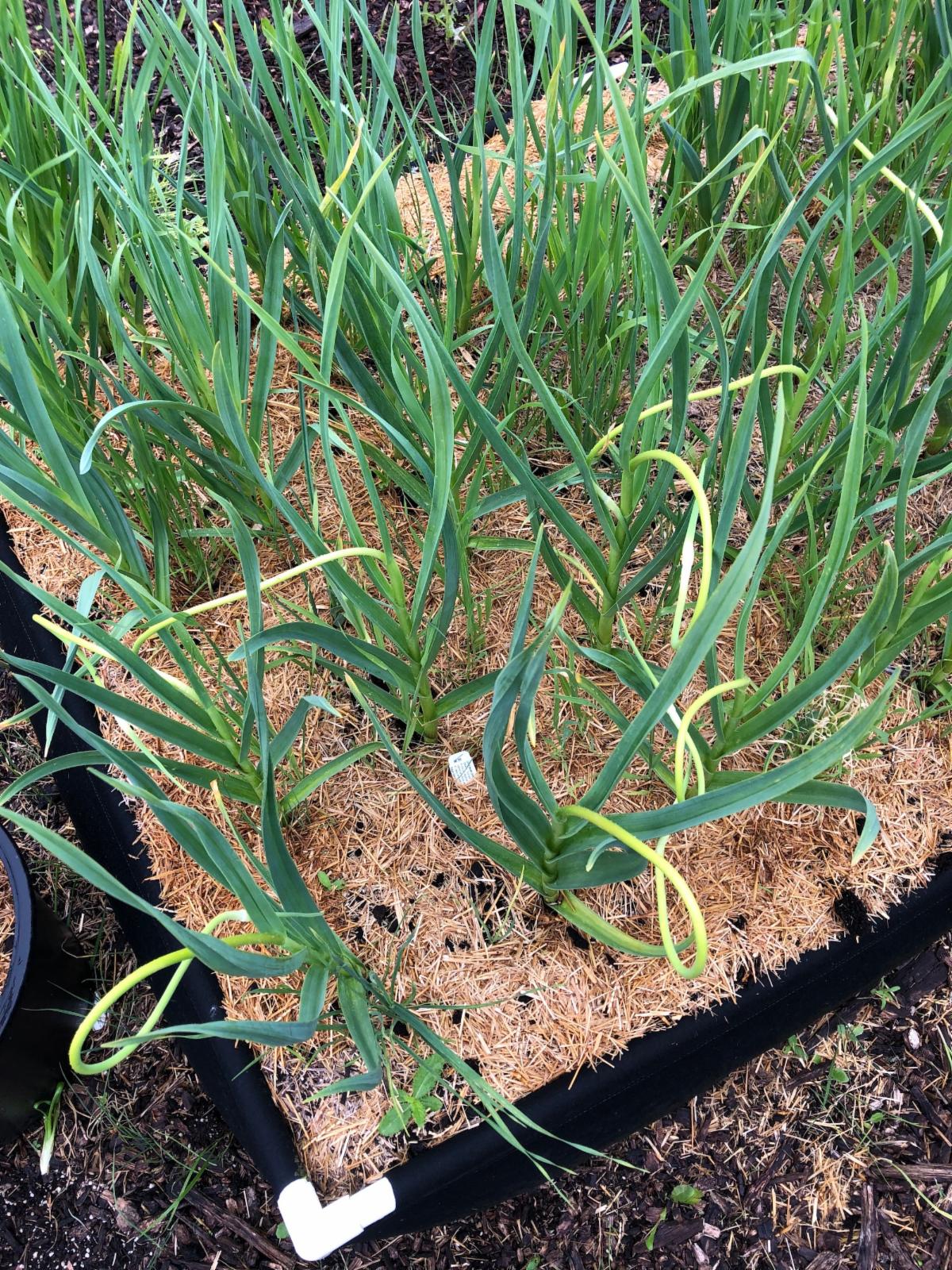Seed garlic are the top-graded bulbs, carefully selected for size, quality and being disease-free.
We LOVE garlic season at Sage Garden! For one thing, some of the tastiest garlic varieties in the world are those best suited to growing in colder climates and second it is actually pretty easy to grow, harvest and store home-grown garlic. The most important thing is to plant at the correct time (October) and ensure a well-drained, sunny location (we grow all of our garlic in raised beds). Seed garlic heads are divided up into their individual cloves when planting, each becoming a full new head of delicious garlic when harvested the following summer.  At Sage Garden, we plant all of our garlic in 48"x96"x12" geotextile raised beds, and mulch to about 3" with organic Garden Straw
At Sage Garden, we plant all of our garlic in 48"x96"x12" geotextile raised beds, and mulch to about 3" with organic Garden Straw
Mulching has also become a gold-standard practice for cold-climate garlic planting. It helps stabilize soil temperatures in fall, reducing the chance of damaging above-ground sprouting before winter and also keeping spring soil moisture in place and keeping weeds down.  Garlic scapes starting to uncurl in early summer. Young scapes can be harvested and enjoyed sauteed in olive oil or butter!
Garlic scapes starting to uncurl in early summer. Young scapes can be harvested and enjoyed sauteed in olive oil or butter!
By the way, if you have ever wondered how to tell the difference between hardneck and softneck garlic it comes down to the scapes. It is only the gourmet hardneck types that develop the snaking stems called scapes, which are sturdy structures that emerge mid-summer and carry the pointy heads skyward. Softneck garlic, which is not generally grown in zone 3 as it is less winter hardy, is typical of the garlic found in grocery stores. It stores really well but has less complex flavours compared to hardneck types. Since softneck garlic lacks a scape, harvested plants can be braided together as is often seen in warmer-climate farmer's markets.







